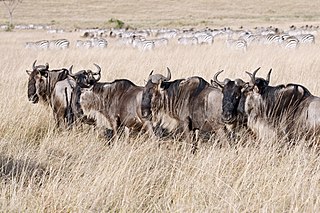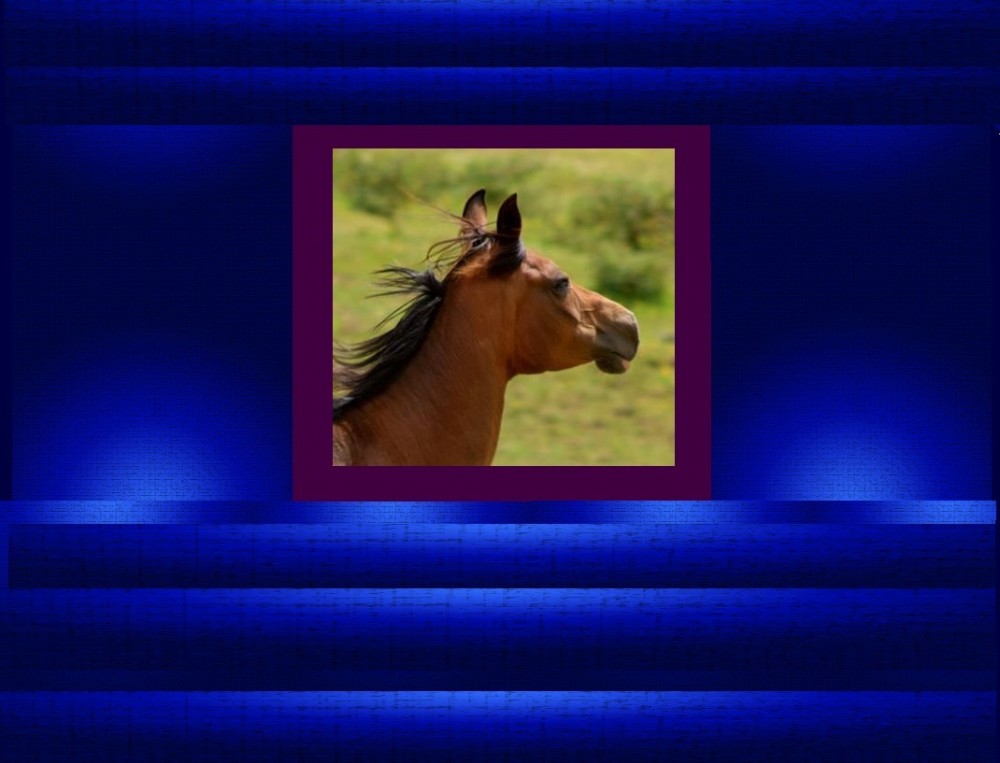
How are horses different from other herd animals such as wildebeests and zebras?
In many ways they are no different at all. One thing these vulnerable prey animals have in common are safety in numbers from predatorial hunters that will stalk and kill the weaker members of their herds.
Horses, like other herd animals, have a strong survival instinct that causes them to hide pain. As you’ve probably observed on nature programs, lions, wolves and other predators will stalk around herds of prey animals, searching for one that shows signs of weakness or pain that indicate it will be easier to separate, run down and kill. The obvious conclusion when we think about how serious it is for these animals to show pain is that in general, they don’t. 
Horse owners often seem to feel that it is a minor issue when horse has a slight limp, a small catch in the stride, or other sign of pain that is observable to the human eye. However, we fail to understand that for a horse to show these signs is potentially signalling to a predator that he is nearly ready to die. For a horse to limp at all is very serious. It means he has reached a point where he can no longer hide the pain, which in many cases means he has spent a period of time attempting to cover the pain he is experiencing. A predatorial animal’s senses are far superior to our own. If we can detect a change with our insensitive eyes, it means the horse has already been displaying his pain at a level that a predator could notice for some time before us.
Try to imagine that you injured your back, hip or foot and it was imperative for you to hide any sign of pain at risk of your own death. What lengths would you go to? What techniques would you employ? I could imagine myself either moving slower or faster than normal to cover up any issues. I could also imagine that I would probably be able to appear fairly normal until the pain was fairly severe.
Taking these thoughts into consideration, it seems likely that many horses experience pain without our knowledge. It also makes sense that many horses would show other expressions of pain before it came to limping or gimping around.
It is my belief that any departure from a horse’s normal behavior should cause the owner to suspect pain before anything else. Refusal to go forward, stalling, bucking, biting…all of these behaviors can relate to a horse reacting to pain in a way that would not be as life-threatening as what we would consider a more obvious sign of pain. A horse that is angry, reactive or aggressive is sending a strong signal to any watching predators that he will not be an easy target. This might distract them from noticing that he does not lift the left leg forward as easily or that he moves more stiffly than the other horses.
I’ve been watching a horse with a neuromuscular disease progress through some different signs of pain. This mare has not yet shown any classic signs of pain such as limping or favoring limbs. The first sign of pain she showed was bucking under saddle. Since this horse had not offered to buck in the hundreds of miles I’d previously ridden on her, I realized this had some cause related to pain caused by tack, an insect sting, or an injury incurred in the pasture. No obvious source of pain could be discovered, yet the behavior continued to occur when this mare was asked to canter on numerous occasions.
This is when many people might decide, “this is definitely a behavioral issue.” In fact, many would conclude that this had become an engrained behavior and consider the horse a problem. The reality was, this horse was having muscle pain related to degenerative neurologic changes and the behavior was related to this. The next sign of pain was becoming more aggressive toward handlers and other horses. Since the horse had an assertive personality, this escalated as her pain and frustration did, causing her to express her feelings more forcefully than usual. Again, someone who hadn’t been well acquainted with this horse might have thought there was a hormonal or training issue, when the only issue going on was pain.
As the degenerative condition continued to progress, this horse became very excitable under saddle. The bucking went away but instead she began to lift her front end up off the ground in a half rear, and turn to the side when asked to go forward. At this point it became obvious that there was a loss of coordination and the horse felt too insecure or weak to carry a rider. It was even more obvious that riding was out of the question when the horse was evaluated on the lunge line and was unable to pick up a canter without falling down.

Many horse owners do not know what normal hooves look like or understand that pathological hooves are a common cause of chronic pain
My point with all of this is that the first symptom of this mare’s muscle pain and disease process came almost a year before the symptoms progressed to the point where a person could say that the horse definitively had problems and where it could be said absolutely that she had been having pain. At this point the signs of pain and discomfort are still not obvious when the mare is not being worked or ridden. She can still walk and trot in the field, her movement looks good to the casual observer, she eats and drinks and performs the basic functions of life. It takes someone with more in-depth knowledge of this horse to understand that there are major behavioral changes from her baseline, such as a horse that used to love to roll and get dirty always appearing clean, the fact that she was always seen galloping around the pasture and now spends most of her time walking, and that she stays closer to the other horses rather than going off on her own.

Horses are complex and have innumerable potential sources of pain
I can imagine that if someone had bought this mare a year ago, they would have believed that they had purchased a spoiled, poorly trained or “crazy” horse. If they hadn’t known her history of being a brave, loyal, incredible mount with many great abilities and many hundreds of good rides, they would have labeled her a bad horse or a dangerous one.
I hope that this lesson is one I can remember as I work with more horses in the future, and I hope that other people will also give horses the benefit of the doubt. Pain is not always obvious to our limited senses, and our shallow understanding of what is really going on in a horse’s complex body should mean that we assume horses have good reasons for their behaviors, even in the extremely rare case of actual mental insanity. Most often, the issue is pain, so I feel it is always safe to assume a horse is in pain until proven otherwise. Even when the horse shows no obvious outward clues that we can immediately latch onto.
